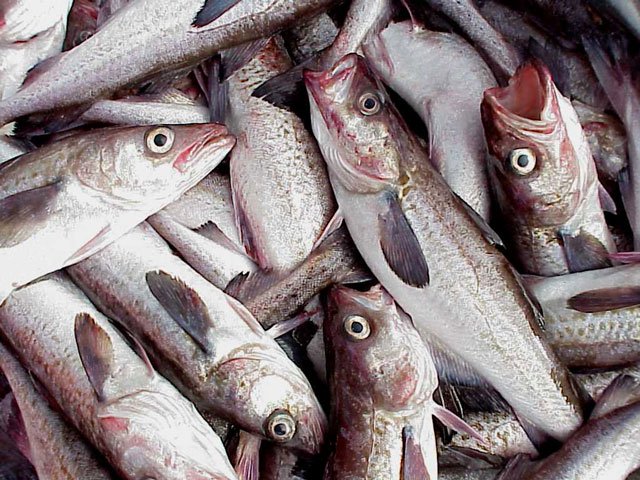Cod catches will decline next year in both the Gulf of Alaska and Bering Sea, while catches for pollock could be up in the Bering Sea and down in the gulf. The North Pacific Fishery Management Council set the 2019 quotas this month for more than two dozen fisheries in federal waters.
The Bering Sea pollock quota got a 2.4 percent increase to nearly 1.4 million metric tons, or more than 3 billion pounds.
Bering Sea cod TACs were cut 11.5 percent to just over 366 million pounds (166,475 mt).
In the gulf, pollock totals will be down 15 percent to 311 million pounds, a drop of 55 million pounds from this year.
Gulf of Alaska cod quota will again take a dip to just over 27 million pounds — down 5.6 percent.
Meanwhile, boats are still out on the water throughout the Gulf of Alaska and Bering Sea hauling up final catches of various groundfish for the year.
The 4 million-pound red king crab fishery at Bristol Bay is a wrap, but crabbers are still tapping away at the 2.4 million-pound Bering Sea Tanner crab quota. Snow crab is open, but fishing typically gets going in mid-January.
Divers are picking up the last 35,000 pounds of sea cucumbers in parts of Southeast Alaska. About 170 divers competed for a 1.7 million-pound sea cucumber quota this year; diving also continues for more than 700,000 pounds of giant geoduck clams.
Southeast trollers are still out on the water targeting winter king salmon.
Looking ahead: There will be no king salmon catches allowed next year at the Stikine and Taku Rivers as a result of low run forecasts.
A fishery for seven kinds of rockfish will open in Southeast on Jan. 5. The 55,000-pound quota can include yelloweye, quillback, canary, copper, China, tiger and rosethorn rockfish.
The 2019 Sitka Sound sac roe harvest has been increased slightly to 12,869 tons. Last season the fleet took just 2,800 tons out of the 11,128-ton herring TAC.
At the state’s largest roe herring fishery at Togiak, the quota for next year will be 24,430 tons, a slight increase.
The year-round cycle of Alaska’s fishing industry will begin on Jan. 1.







